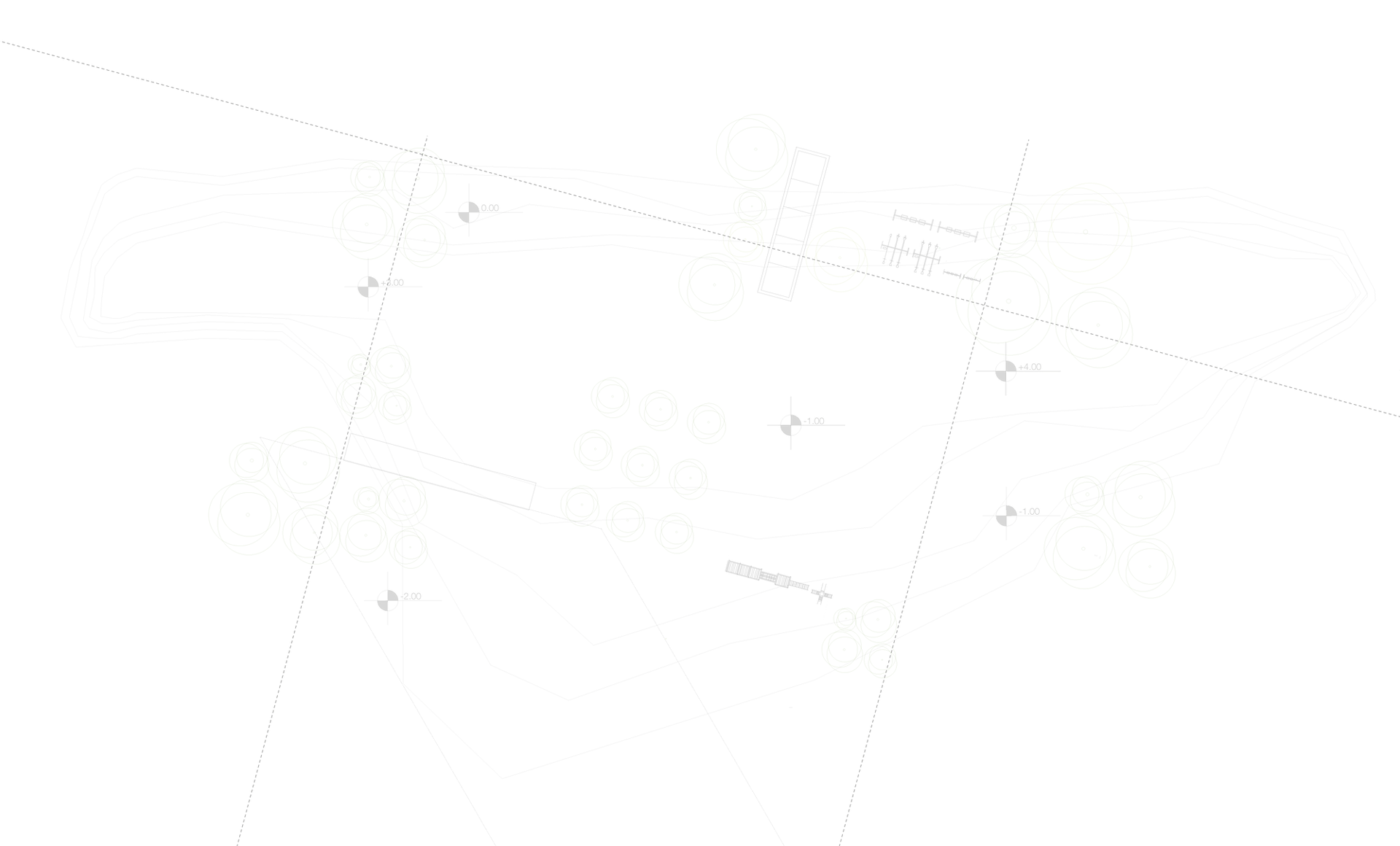
NATIONAL COMPETITION FOR THE NEW MUSEUM OF THE ROYAL COLLECTIONS OF THE SPANISH CROWN AT THE ROYAL PALACE IN MADRID (2002)




MEMORY
As a finalist of the National Competition, the proposal is based on giving new value to the site of the urban facade, defined by the 17th century Royal Palace and recent Cathedral of Madrid facing the ancient gardens of the Jardín del Moro (Moorish Gardens) as a beautiful landscaping that overlooks the Manzanares River. Volumetric and facade composition was proposed in accordance with the western facade of the palace.
The re-use of the artificial cliff means excavation and new construction with basements for garage, levels open to the western light in a very opaque facade with very thin, horizontal openings to match the desolate, solid podium of the Palace. The main idea of the proposal is the recovery of more than 180 meters of the old Arab wall of Madrid and its original passage. All these remains are saved by adequate technological excavation and a newly covered plaza. In order to avoid the blocking of the views over the western garden of the Crown at the Casa de Campo and modern skyline of Madrid, a depressed entrance was proposed as unique solutions compared with other competitors´ proposals.
The internal composition of the museum is simple and consists of a central gallery and wide rooms at both sides. Only some public-use spaces for cafeteria, stores and auditorium are erected over the plaza level, in the back of an open arcade similar to the one designed by the architect Sabatini for the Palace staircases to the garden.
In order to complete the view of the circular remains of the wall, the hall is extended in L-shape as a narrow corridor of exhibition of carriages and new entrance to the main artery together with the entrance to the palace from the Plaza de la Armeria, bringing the entrance nearer to the main street and Plaza of the Oriente for climate purposes. The jury explicitly justified the exclusion of this project with the small subterranean passageway under the Plaza de la Armeria and entrance to the Cathedral, even knowing that it would be invisible.
